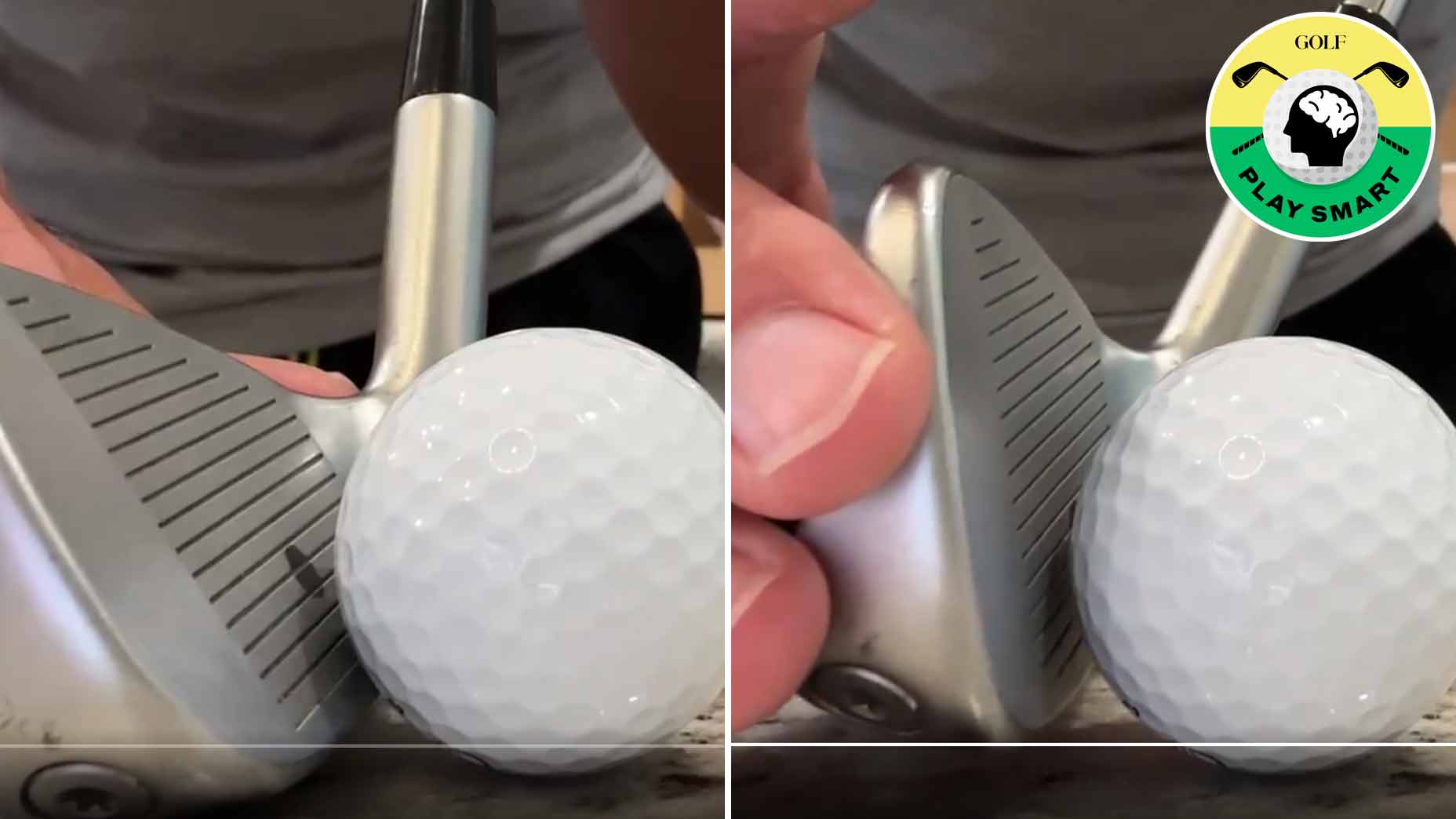1 common mistake causing inconsistent ball-striking, per top teacher

By eliminating this common issue, you'll start to see better ball-striking and more consistent results.
GOLF.com
Welcome to Shaving Strokes, a GOLF.com series in which we’re sharing improvements, learnings and takeaways from amateur golfers just like you — including some of the speed bumps and challenges they faced along the way.
The golden goose that every golfer wants to catch is solid ball-striking ability. When you’re capable of doing this, it cuts out all those frustrating chunks or tops, oftentimes leading to pure shots that give you more chances of shooting low.
Unfortunately, there’s no quick-fix in order to achieve this.
While there are lots of reasons why you might struggle with ball-striking, a common one is simply not rotating enough in the backswing. When this happens, players often sway instead, which causes the entire swing sequence to be off — leading to those mishits and extra shots on a hole.
But during a recent lesson with GOLF Top 100 Teacher Jim Murphy, he not only identified what’s causing me to have ball-striking problems, but also gave me some advice on how to solve the issue once and for all. So take a look below to see Murphy’s tips, and see how you can be on your way to purer shots.
How to get more consistent ball-striking
Standing on the range with Murphy, I just tell him to do what he does best: Observe me hit some balls and see what mechanical issues he identifies in my swing.
After hitting just one shot — albeit a decent one — he and I dive into some instruction to see how I can improve my ball-striking skills.
“That’s not a bad shot, but it’s always inconsistent,” I tell him.
Next, Murphy goes into full-blown teacher mode, describing how he likes to help players improve.
“I always go for the one thing that causes a lot of the other effects,” Murphy tells me. “A lot of people will see effects and not see the cause, so they try to fix the effect and never do it long-term because the cause is still there.”
He then tells me the common flaw he was able to see with my swing.
“The biggest [issue] I see in your swing is that you don’t get enough turn behind the ball with your left shoulder,” Murphy explains. “So [when you come through towards impact], you’re out ahead of it and you leave it out to the right like you do.”
By swaying instead of rotating, Murphy says it’s causing the majority of my ball-striking problems.
“Your left shoulder sort of dips instead of turns, so if you can get your left shoulder to be behind the ball, then you can swing through from the inside and you won’t be out in front of it so much,” he says.
I then ask him about the transition at the top of the backswing, wondering if there should be an internal clock to help trigger when to go into the downswing — since one of my problems is cutting it short and speeding up that element of the swing.
“I don’t think you need to, because, as you turn, you’re lengthening out your swing,” he tells me. “But before, when you weren’t rotating all the way, you used to have to try and control it by slowing things down.
“By getting longer [in your backswing and creating depth], it’s going to feel slower because you’re going a longer distance.”
After flushing my next shot right down the middle of the range, it’s clear that simply adding rotation and creating width in the backswing is a secret ingredient towards better ball-striking.
Rukket Sports Pathfinder Impact Mat™
$69.99
View Product













